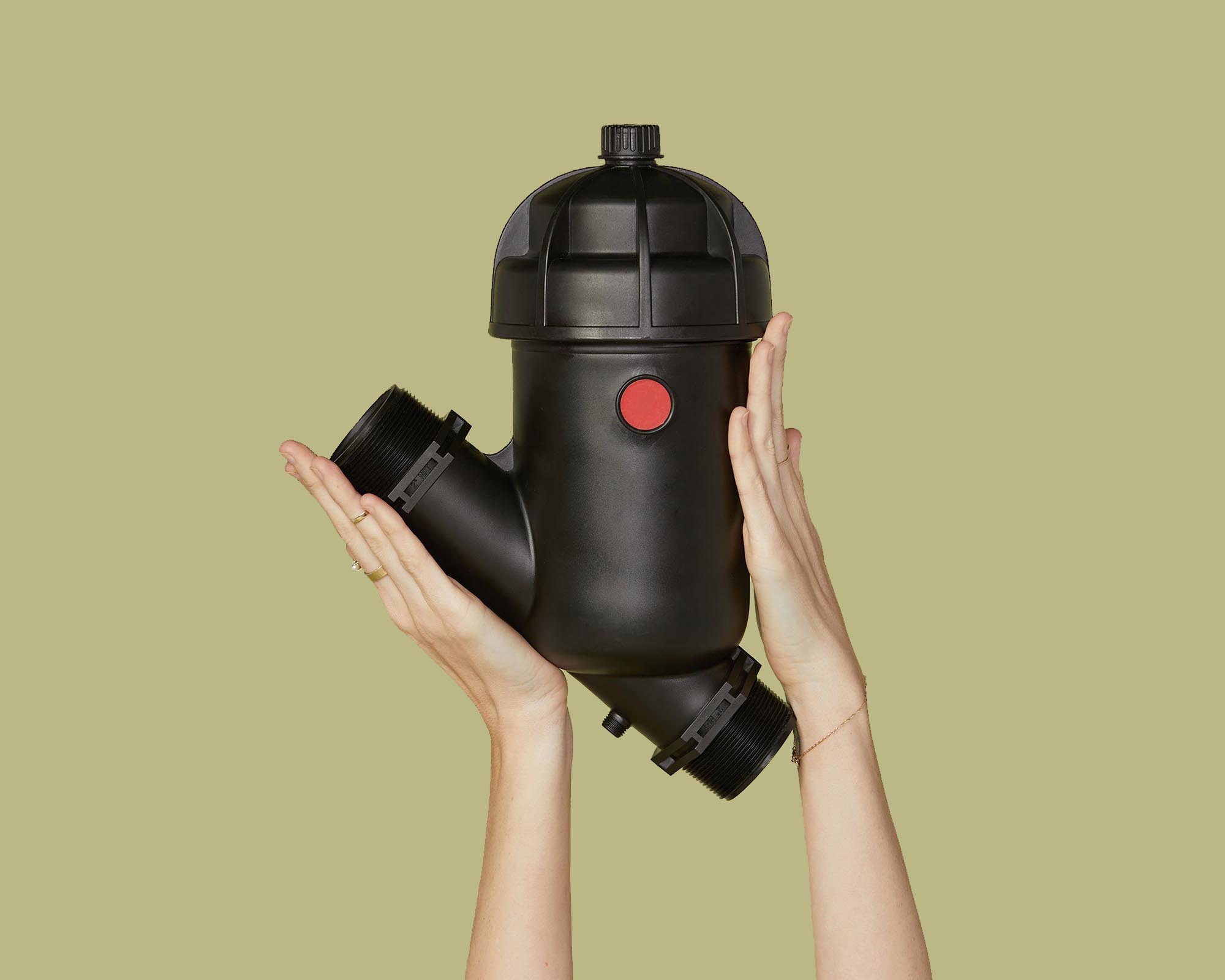Recycled plastic clothing is a contentious topic. Is it an innovative solution to the vast amounts of plastic waste we produce? Or is it the lesser of two evils? The list of pros and cons seems endless, and trying to make sense of all the differing perspectives can be overwhelming. Here at Good On You, we recognise that there are certainly issues with materials like recycled PET plastic – but it isn’t all black and white. Read on to learn more.
What is recycled plastic clothing?
There are two broad categories of materials that clothing can be made from, and they are synthetic and natural. Natural materials are things like linen, hemp, and animal fibres – things that are sourced in nature. Synthetic materials, like polyester and nylon, are man-made, and generally involve a much more resource intensive process to make it to the shelves.
It is important to note here that natural doesn’t always equal better for the environment or its inhabitants. Specifically traditionally farmed cotton and leather are quite resource intensive. As always, we recommend GOTS certified organic cotton, and any of these innovative leather alternatives!
When our grandparents were young, 80% of clothing was made from cotton and other naturally biodegradable fabrics. Only after World War II, and the chemical advancements that came along with it, did synthetic fabrics really take off. They were faster and cheaper to mass-produce, and soon made their way into most garments on the market.
So, what’s the issue?
The problem with these synthetic fibres is that they are made from plastic — and plastic doesn’t biodegrade. All the plastic that has ever been produced is still around today, and will be around for a very long time to come. Along with the myriad of negative impacts of the fast fashion industry that is rife with these materials, their production is also unsustainable: plastic-derived materials are incredibly harsh on the environment and workers, from their staggering water usage to their toxic dyeing process, not to mention their association with the fossil fuel industry. But one of the scariest side effects of these materials is microfibres. We’ll come back to those tiny particles in a minute.
This is where recycled plastic fabrics come in — and they certainly sound like a promising solution at first glance. While they are still man-made materials, the resources needed to create them are sourced from plastic that already exists in the world, so it’s not produced in the first instance for clothing. Think things like discarded plastic water bottles and old fishing nets. One such innovative material is ECONYL, developed and distributed by Italian company Aquafil. They source marine debris and give it new life by transforming it into a nylon yarn that is exactly the same quality as virgin nylon, and is produced using a closed-loop system, which means resource usage is way less intensive.
Overall, it is a commendable effort to clean up some of the huge amounts of rubbish in our oceans, and is certainly a better option than traditionally produced synthetic fabrics, but there is still one tiny, itty bitty problem. Or rather, billions of tiny problems. Microfibres.
Microfibres, or tiny bits of plastic, are shed by clothing (and cloths, and towels) made from synthetic fabrics every single time they are washed, including recycled synthetic fabrics, and they make their way to the ocean by the billions. In fact, they are one of the biggest sources of ocean and shoreline pollution, and they are working their way into marine life and even humans. So what can we do about them?
Managing microfibres
Since the existence and significance of microfibre pollution was brought to light about five years ago, a debate has been raging about who is responsible for managing them. Does it require systemic change (like bidding adieu to fossil fuels altogether), or is it up to consumers? Should washing machine manufacturers implement filtration systems at a production level, or is it the responsibility of clothing brands to tackle the issue? And who would pay for any or all of these ideas?
There is something to be said for each of the proposed solutions, but until the issue is tackled higher up on the food chain, so to speak, there are a few things we as conscious consumers can do to significantly reduce our impact.
- Try to avoid clothing made from synthetic fabrics that are known shedders of microfibres, and instead invest in natural materials for future purchases. For clothing that is usually made with polyester and nylon like activewear and swimwear, look out for TENCEL® – a breathable and biodegradable option made from wood pulp. There are some garments, such as footwear, that are less of a concern when it comes to shedding because they avoid the washing process. These are great options for recycled plastics such as ECONYL.
- Chances are you already own synthetic clothing, so investing in a way to catch microfibres in the wash is a good idea. Buy a purpose-designed wash bag like the Guppyfriend Washing Bag, or even install a filter like this newly released one by Girlfriend Collective if that option is available to you, financially or otherwise.
- Wash smart! The shedding of microfibres is significantly reduced by washing only full loads (less friction means less shedding), on cold, and for a shorter duration. Washing activewear and swimwear by hand will keep your clothes brighter for longer, and reduce shedding too. Switching to liquid soap is also proven to help, and of course doing less washing overall. You’d be surprised by how much odours reduce just by hanging clothes in the sun for a while!
- Support slow fashion. Investing in high quality clothing, especially clothing made from natural fabrics that will eventually biodegrade, will greatly reduce your direct contribution to pollution in the long run, microfibre and otherwise.
- Reach out to clothing companies and encourage them to tackle the issue head on. Certain companies like Patagonia are starting to research ways to reduce microfibre release, like through innovative material design and reselling washbags, which is a great start. The more brands that get on board, the better!
- Spread the word! Consider sharing this article as a starting point, and encourage your friends and family to do their own research, too. There is power in consumer-driven change, and the impact of our dollar should not be underestimated.
















